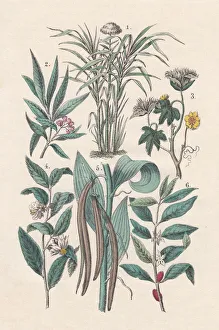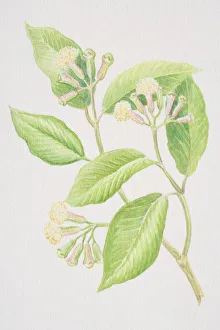Syzygium Aromaticum Collection
Syzygium aromaticum, commonly known as cloves, is a fascinating and versatile spice that has captivated people for centuries
All Professionally Made to Order for Quick Shipping
Syzygium aromaticum, commonly known as cloves, is a fascinating and versatile spice that has captivated people for centuries. Found on the picturesque island of Bali in Indonesia, the clove tree (Syzygium aromaticum) stands tall and proud, bearing its precious fruit. Also referred to as Caryophyllus aromaticus or Giroflier, this evergreen tree produces flower buds that are carefully harvested to create the beloved spice we know as cloves. With their unique shape and rich aroma, these flower buds have become an essential ingredient in various culinary delights around the world. Dating back to 1880, a hand-colored lithograph showcases the economic significance of Syzygium aromaticum. This captivating artwork highlights the beauty of this plant and its importance in trade and commerce during that era. The artist D Blair beautifully captures the essence of cloves with his depiction of a flower bud from Syzygium aromaticum (Eugenia carophyllata). The intricate details showcase nature's artistry at its finest. Indonesia's Maluku region, also known as Spice Islands, particularly Seram Island, plays a significant role in cultivating and drying cloves. These vibrant red buds are spread out under the sun to undergo meticulous drying processes before they reach our kitchens worldwide. In addition to cultivated crops, wild cloves can be found thriving across Southeast Asia. Their natural growth adds an element of adventure when exploring these exotic lands. The clove tree itself is a sight to behold on Bali Island. Standing amidst lush greenery against clear blue skies creates a mesmerizing backdrop for these fragrant trees. Whether you call it Caryophyllus aromaticus or simply clove - one thing remains certain: this spice holds immense cultural value throughout history. From ancient medicinal uses to enhancing flavors in modern cuisine - Syzygium aromaticum continues to leave an indelible mark on our taste buds with each close-up view revealing its intricate beauty.















